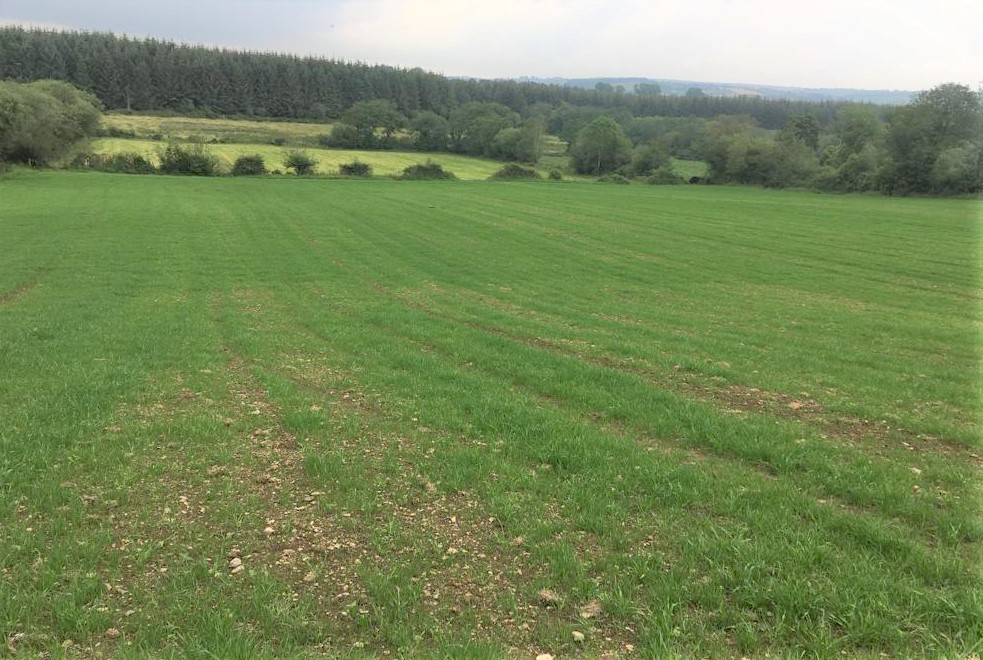Reseeding is becoming a routine action on many farms; so, it is important that it is completed and managed correctly – from beginning to end.
On Tuesday, June 25, Bandon Medical Hall in conjunction with Goldcrop held an event to demonstrate best practices when carrying out reseeding.
The field in discussion was sown six weeks ago – on May 14. Firstly, the field was sprayed using glyphosate, ploughed and then sown using a one-pass machine.
The importance of having a firm seed bed when sowing was noted by Goldcrop’s Dr. Pat Cashman on the day.
In this case, the field was not rolled before sowing. However, on the day it was advised, by Pat, that “rolling before sowing – particularly when using a plough – would have resulted in better consolidation”.
This photo (pictured below) was taken on June 11. It is clear that establishment percentage was higher on the headland than the middle of the field.
This, he said, was “due to better consolidation – as it was rolled more frequently than the centre of the field”.
This photo (pictured below) was taken on June 14, four weeks after sowing.
The paddock is a designated silage field; so the varieties were sown based on this. The varieties sown were Moira (diploid), Astonconqueror (diploid) and Fiotona (tetraploid).
Theses varieties were chosen as they are associated with high spring growth, are high yielding and suitable for two to three cuts of silage. They are all intermediate heading varieties.
This photo (pictured below) was taken five weeks after sowing. The farmer pointed out that the field was slow up until the past week when the heat, along with the rain, resulted in a surge in growth.
This photo (pictured below) was taken on the day of the event – six weeks after sowing.
The management of the sward post-sowing from here on is critical for the continued successful establishment of the sward and for weed mitigation.
To conclude, advice was given by Michael Ryan from Whelehan Crop Protection on the post-sowing management of the sward.
Michael advised the farmer to spray the sward straight away with “Pasture Trio – as the grass was at the three-leaf stage and the weeds were the size of a €2 coin”.
The sward wasn’t quite ready for grazing, but it was advised to graze the sward with young stock – when conditions allowed – and to continue to graze frequently after the first grazing. Finally, the importance of continuing to fertilise accordingly was discussed.




